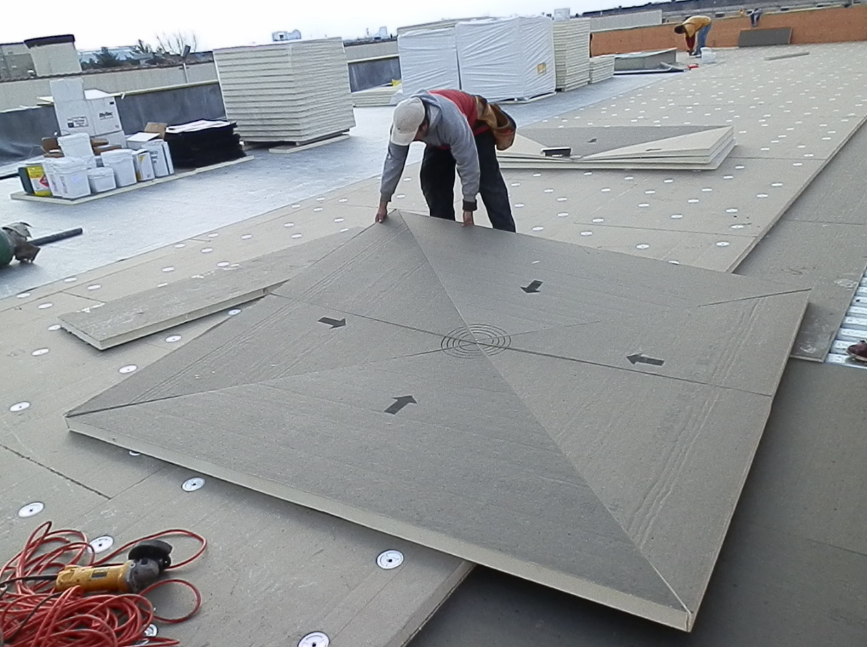Are you looking for Tapered insulation? The best roofing material for a flat roof is surely a single sheet of rubber custom-designed for weather-resistant flat roofs. The sheet is directly laid onto the roof boarding itself and supported by the roof rafters and nagging. Tapered insulation material is usually laid in the space between the two. If you’re renewing your flat roof, you may want to also renew that altogether.
Tapered Insulation from Reputable Contractors
You should let a professional help you with the insulation work or advise you on replacing your current flat roof.
Bituminous felt Materials
For many years, the most common material for a new flat roof has been bituminous felt laid in 3 layers. The first layer is nailed down and the upper two layers are bonded to the one under with mastic bitumen. Depending on the material used, that could mean heating a solid bitumen-based compound into liquid and then pouring it onto the underlying material and spreading it uniformly over the entire area of the roof.
After that, you then have to wait for this compound to cool before you can apply the next layer. In the end, a layer of stone chippings was spread over the roof and bonding it with a chipping compound to help reflect the rays of the sun and prevent the bitumen and felt from degrading quickly.
However, this used to be a messy, complex, and time-consuming task that was best left to professionals. Additionally, there were many stages where it was easy to fail to make the roof weatherproof. For example, where the edges of the felt intersected the existing slate or tile roofing of the pitched roof
Most suppliers cut flat roof insulation board to the exact size and shape that you need to ensure that there are no unnecessary joins. That means there will be no weaknesses and a very long-lasting, leak-resistance roof.
Use of Rubber Materials
The important part of the entire process is to make sure that there are no gaps between the rubber roof and any existing pitch roof through which water could penetrate. To ensure that there are no issues it’s necessary to run the rubber material up and beneath the slates or tiles of the adjoining pitch roof. That ensures that any water dripping from the lowermost downfalls into the rubber without the possibility of it overlapping the edge and getting under the pitched roof.
Conclusion
Rubber roofs have been proven to last for up to 50 years or more even under harsh weather. For that, it’s one of the roofing materials you should think about when considering tapered insulation on your new flat roof.

